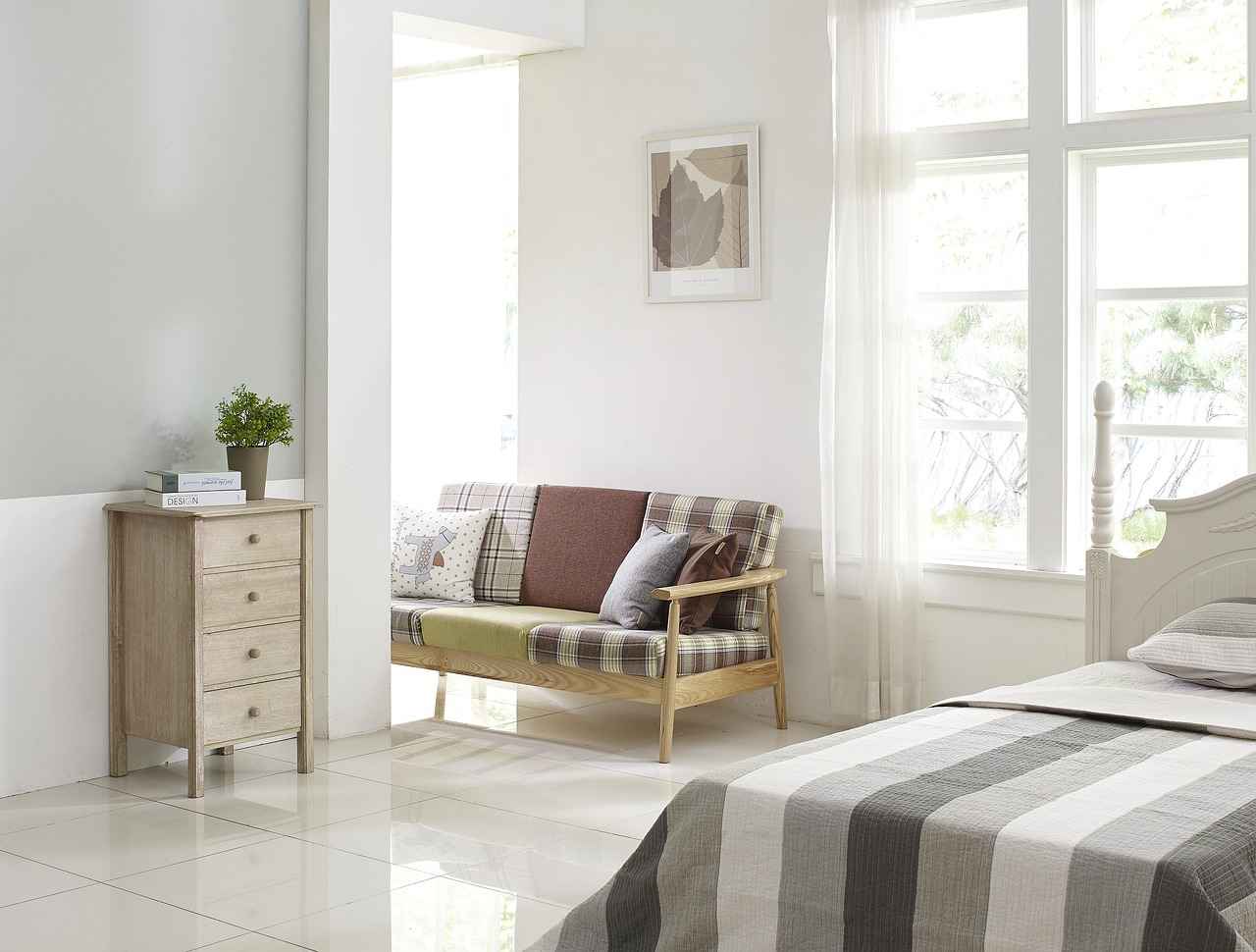In today’s world, where living spaces are often limited, finding innovative ways to maximize functionality and style is essential. Room dividers not only create privacy but also redefine areas within your home, making them more versatile. Here, we explore 25 genius DIY room divider ideas that can transform your small spaces into beautifully defined zones.
A room divider is a versatile element that serves multiple functions in small areas. It can create privacy, define different living zones, and enhance the overall decor. By understanding the significance of room dividers, you can make informed choices that cater to your lifestyle and aesthetic preferences.
There are various types of room dividers available, including:
- Folding Screens: Easy to move and store.
- Bookshelves: Functional and stylish, providing storage.
- Curtains: Simple and cost-effective for flexible separation.
- Plants: Natural dividers that enhance air quality.
- Mirrors: Create the illusion of space while dividing areas.
Selecting the right type depends on your space, style, and functional needs.
Fabric room dividers offer a soft and inviting look. They can be customized to match your decor and provide flexibility for privacy and light control. Consider using lightweight materials that can easily be hung from a ceiling track for a seamless look.
Bookshelves are a practical choice for room dividers. They not only separate spaces but also offer ample storage for books and decorative items. When styled correctly, they can enhance the aesthetic appeal of your space.
Choosing between open and closed bookshelves impacts light and visibility. Open shelves create a more airy feel, while closed shelves provide more privacy and a sense of enclosure.
Creating a DIY bookshelf room divider allows you to customize the size and style to fit your space perfectly. Consider unique designs that reflect your personal taste, such as using reclaimed wood or adding decorative elements.
Incorporating plants as room dividers not only enhances decor but also improves air quality. They add a natural element that can soften the look of a space.
Selecting plants that thrive in your environment is crucial. Consider factors like light, humidity, and maintenance when choosing plants for your room divider. Popular choices include fiddle leaf figs, snake plants, and pothos.
Arranging plants in varying heights and sizes creates visual interest. Use hanging planters, tall floor plants, or tabletop arrangements to define spaces uniquely.
Folding screens are a versatile option for creating temporary divisions in a space. They can be easily moved or stored, making them an ideal solution for renters or those who frequently change their layout.
Curtains provide an easy and budget-friendly way to separate areas. They can be drawn open or closed for flexibility and can complement your existing decor. Choose fabrics that match your color scheme for a cohesive look.
A gallery wall can serve as a unique room divider while showcasing your favorite art pieces. This approach adds character and personality to your space, making it feel more inviting.
Using wooden pallets as room dividers adds a rustic touch to your home. They are budget-friendly and can be customized with paint or decor to suit your style, making them a popular choice for DIY enthusiasts.
Mirrors can create the illusion of a larger space while serving as a stylish room divider. They reflect light and can make your area feel more open and airy, ideal for small rooms.

What is a Room Divider and Why Use One?
Room dividers are essential elements in modern interior design, especially for those living in small spaces. They provide a multitude of benefits that can transform a cramped environment into a functional and aesthetically pleasing area. Understanding what a room divider is and why you might want to use one can help you make informed decisions when it comes to your home decor.
A room divider is a partition that separates different areas within a single space. It can be a physical barrier that creates distinct zones for various activities, such as sleeping, working, or entertaining. Room dividers can take many forms, from traditional folding screens to modern bookshelves, curtains, or even plants.
- Create Privacy: In shared living spaces, privacy can be a concern. Room dividers help to create secluded areas where individuals can enjoy personal space.
- Define Areas: They allow you to delineate different functional areas within an open floor plan, making it easier to organize your space.
- Enhance Decor: A well-chosen room divider can serve as a decorative element, adding style and character to your home.
- Improve Acoustics: Dividers can help reduce noise levels, making your home a quieter and more peaceful environment.
When selecting a room divider, consider your space, style, and functional needs. Some popular types include:
1. Folding Screens: Versatile and portable, these can be easily moved as needed.2. Bookshelves: Not only do they provide separation, but they also offer storage.3. Curtains: A cost-effective option that allows for flexibility in opening and closing spaces.4. Plants: Natural dividers that enhance air quality and aesthetics.5. DIY Options: Customizable solutions that reflect your personal style.
Utilizing room dividers can significantly enhance your living space. Here are some benefits:
- Flexibility: Room dividers can be rearranged or removed as your needs change, allowing for a dynamic living environment.
- Visual Interest: They can serve as a focal point in your decor, drawing attention and adding depth to your design.
- Increased Functionality: By creating separate areas, room dividers can make your space more functional, catering to different activities simultaneously.
When deciding on a room divider, consider factors such as:
- Space Constraints: Measure your area to ensure the divider fits without overwhelming the room.
- Style Compatibility: Choose a design that complements your existing decor.
- Material: Consider durability and maintenance; some materials may require more upkeep than others.
In summary, room dividers are versatile tools that can enhance both the functionality and aesthetics of small spaces. Whether you seek to create privacy, define areas, or simply enhance your decor, understanding the various types and benefits of room dividers will help you make informed choices for your home.
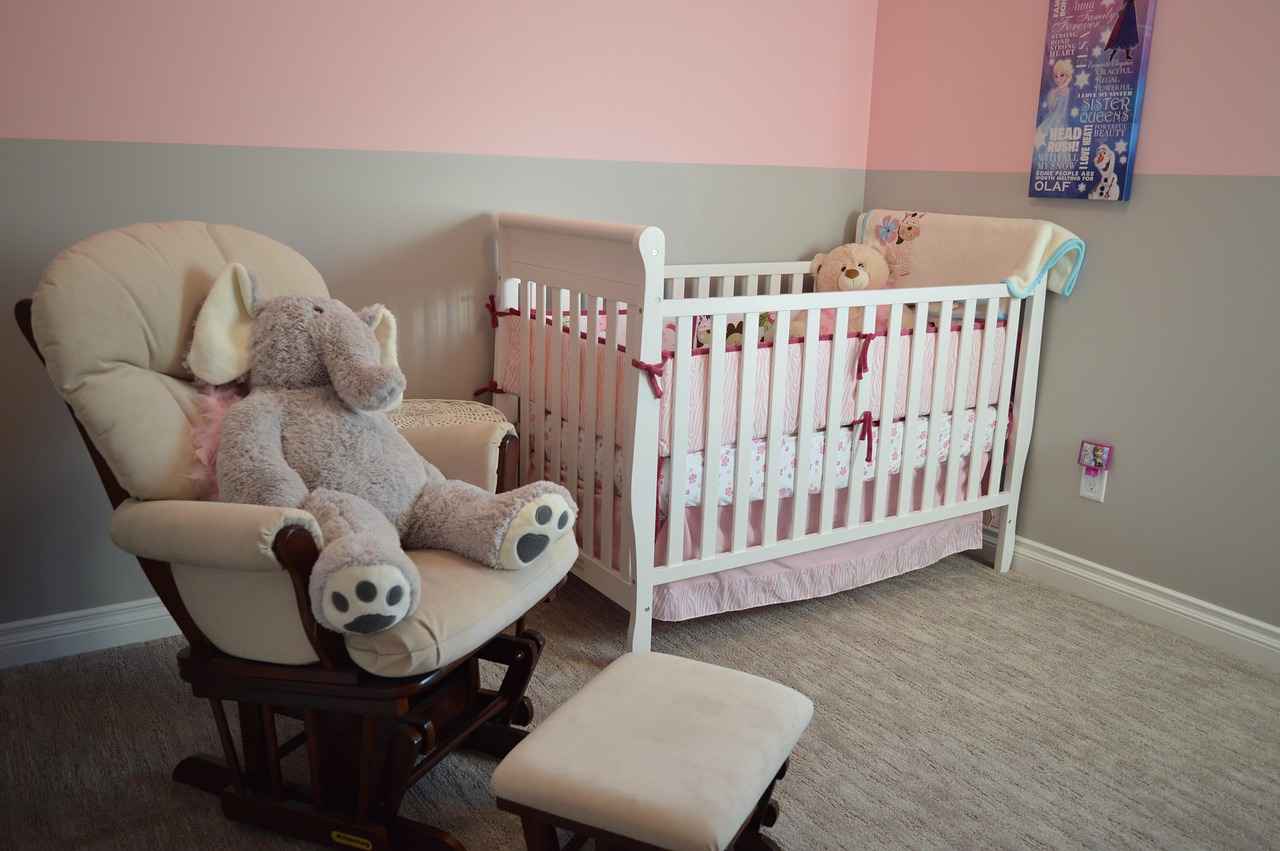
Types of Room Dividers: Which One is Right for You?
When it comes to maximizing small spaces, room dividers play a crucial role. They not only create distinct areas within a room but also enhance the overall aesthetic. With a plethora of options available, choosing the right type of room divider can be a daunting task. In this section, we will explore various types of room dividers, helping you determine which one best suits your needs.
Room dividers come in various forms, each offering unique benefits and styles. Here are some popular types:
- Folding Screens: These are versatile and can be easily moved around. They come in various designs, from traditional to modern, allowing you to select one that complements your decor.
- Bookshelves: Not only do they provide storage, but they also act as a stylish divider. Depending on the design, bookshelves can either be open or closed, affecting both light and privacy.
- Curtains: A cost-effective solution, curtains can be drawn back or closed to create privacy. They come in an array of fabrics and colors, making them easy to customize.
- Plants: Using greenery as a natural divider adds a refreshing touch to your space. Plants can improve air quality and bring a sense of tranquility.
- DIY Pallet Dividers: For a rustic charm, wooden pallets can be repurposed into unique dividers. They can be painted or decorated to match your style.
- Mirrored Dividers: Mirrors create an illusion of space, making your area feel larger. They can be both functional and decorative.
Selecting the ideal room divider depends on several factors:
- Space Availability: Consider the size of your room. In smaller spaces, lightweight and movable dividers like folding screens or curtains are ideal.
- Style Preference: Your room divider should complement your existing decor. For a modern look, opt for sleek shelves or mirrors; for a cozy feel, consider fabric or wood.
- Functionality: Think about what you need the divider for. If you require privacy, closed bookshelves or curtains may be better. If you want to maintain an open feel, choose open shelving or folding screens.
Utilizing room dividers offers numerous advantages:
- Privacy: They provide a sense of seclusion, especially in shared living spaces.
- Organization: Room dividers can help delineate areas for different activities, such as work and relaxation.
- Aesthetic Appeal: A well-chosen room divider can enhance the overall decor and add a unique touch to your home.
In summary, the right room divider can transform your living space significantly. By considering the types available and your specific needs, you can create a functional and aesthetically pleasing environment that maximizes the potential of small areas.

DIY Fabric Room Dividers: A Soft Touch
When it comes to enhancing the aesthetic appeal of your home while also providing practical solutions for space management, DIY fabric room dividers stand out as a fantastic option. These dividers not only offer a soft and inviting look but also serve multiple functions, making them a versatile addition to any room.
One of the key advantages of fabric room dividers is their customizability. You can choose fabrics that match your existing decor, whether you prefer vibrant colors, subtle patterns, or textured materials. This allows you to create a cohesive look in your space. For instance, using a sheer fabric can create an airy feel, while heavier drapes can provide more privacy. The right choice can transform a simple room into a stylish retreat.
Additionally, fabric dividers offer flexibility when it comes to light control. Depending on the fabric’s opacity, you can manage the amount of natural light entering a space. For example, light-filtering fabrics can brighten a room without compromising privacy, making them ideal for areas where you want to maintain a connection with the outdoors.
- Easy Installation: Fabric dividers can be hung from a curtain rod or mounted on tracks, making installation straightforward and non-invasive.
- Portability: These dividers can be easily moved or repositioned, allowing you to redefine your space as needed.
- Cost-Effective: Compared to other room divider options, fabric dividers can be more affordable, especially if you opt for DIY solutions.
Moreover, creating your own fabric room divider can be a fun and rewarding project. You can start by measuring the space you want to divide and selecting the appropriate fabric. Consider using a sturdy frame or even repurposing an old curtain rod to hang your fabric. Don’t forget to add decorative elements like tassels or trims for a personalized touch.
In terms of functionality, fabric room dividers can also serve as a backdrop for various activities. For example, they can create a cozy reading nook in a larger living area or provide a private space for work or study. The versatility of fabric dividers allows them to adapt to your changing needs.
Another benefit is that fabric dividers can help absorb sound, making them a great option for creating quieter spaces within larger rooms. This can be particularly useful in homes with open floor plans where noise can easily travel from one area to another.
Lastly, don’t underestimate the impact of fabric room dividers on your home’s overall ambiance. By selecting the right colors and patterns, you can evoke certain moods. Soft, pastel colors might create a calming environment, while bold, vibrant hues can energize a space. The choice of fabric can significantly influence the atmosphere of your home.
In conclusion, DIY fabric room dividers are not just practical solutions for space management; they also enhance the aesthetic appeal of your home. With their soft look, customizability, and versatility, fabric dividers can transform any area into a stylish and functional space. Whether you are looking to create privacy, manage light, or simply add a decorative touch, fabric room dividers are a brilliant choice.

Using Bookshelves as Room Dividers: Functional and Stylish
Bookshelves are not just for storing your favorite novels; they can also serve as a versatile room divider that enhances the functionality and aesthetics of your living space. By incorporating a bookshelf as a room divider, you can create distinct areas within an open floor plan, allowing for privacy and organization.
One of the most significant advantages of using bookshelves as room dividers is their dual purpose. They provide ample storage for books, decorative items, and personal belongings while simultaneously acting as a barrier between different areas of a room. This is particularly beneficial in small spaces where every square foot counts.
Design Flexibility: Bookshelves come in various styles, materials, and sizes, making it easy to find one that complements your existing decor. Whether you prefer a modern, minimalist design or a rustic, vintage look, there’s a bookshelf that will fit seamlessly into your home. You can even customize a DIY bookshelf to reflect your personal taste, ensuring it enhances the overall aesthetic of your space.
Open vs. Closed Bookshelves: When choosing a bookshelf as a room divider, consider whether you want an open or closed design. Open bookshelves allow light to flow freely, creating an airy feel and making spaces appear larger. They also provide an opportunity to showcase your favorite books and decor items. In contrast, closed bookshelves offer more privacy and can help to define spaces more clearly. This choice ultimately depends on your specific needs and the atmosphere you wish to create.
DIY Bookshelf Divider Ideas: If you’re feeling creative, consider building your own bookshelf room divider. This allows you to tailor the size and design to fit your space perfectly. You can use materials such as reclaimed wood for a rustic feel or sleek metal for a modern touch. Additionally, painting or staining the bookshelf can further enhance its appearance, making it a focal point in your room.
Another exciting aspect of using bookshelves as room dividers is the opportunity to incorporate decorative elements. You can style the shelves with plants, artwork, or personal mementos, adding character and warmth to your space. This not only makes the bookshelf functional but also visually appealing.
Furthermore, bookshelves can be used to delineate specific areas in a multifunctional room. For example, in a studio apartment, a bookshelf can separate the sleeping area from the living space, creating a sense of privacy without the need for permanent walls. This flexibility is particularly valuable in small living environments where maximizing space is essential.
Maintenance and Care: While bookshelves are generally low-maintenance, it’s essential to keep them organized and tidy. Regularly dusting the shelves and ensuring that items are neatly arranged will not only keep them looking great but also enhance the overall ambiance of your room.
In summary, using bookshelves as room dividers is a practical and stylish solution for enhancing your living space. They provide functional storage, create visual interest, and can be customized to suit your unique style. Whether you opt for a DIY project or purchase a pre-made unit, integrating a bookshelf as a room divider will undoubtedly elevate the look and feel of your home.
Open vs. Closed Bookshelves
When it comes to designing your living space, the choice between open and closed bookshelves can significantly influence not only the aesthetics but also the functionality of the room. Each type of bookshelf offers distinct advantages and disadvantages that cater to different needs and preferences.
Open bookshelves are an excellent choice for those looking to create a sense of openness in their space. These shelves allow light to flow freely, making the area feel larger and more inviting. They are perfect for displaying decorative items, books, and personal treasures, turning your storage solution into a visual centerpiece.
- Enhanced Visibility: Open shelves provide easy access to your belongings and make it simple to showcase your favorite items.
- Airy Atmosphere: By allowing light to pass through, open bookshelves can help create a bright and cheerful environment.
- Easy to Style: You can easily rearrange items on open shelves, giving you the flexibility to refresh your decor whenever you want.
On the other hand, closed bookshelves offer a more private and contained way to organize your space. These shelves often come with doors or panels that can be closed to hide clutter and create a neater appearance. This option is ideal for those who prefer a more streamlined look or have items they would like to keep out of sight.
- Clutter Control: Closed shelves can help conceal messes, making your space appear tidier and more organized.
- Privacy and Protection: Items stored behind closed doors are protected from dust and damage, making them a suitable choice for valuable books or collectibles.
- Cozy Feel: The presence of closed bookshelves can create a more intimate atmosphere, perfect for reading nooks or home offices.
Deciding between open and closed bookshelves ultimately depends on your personal style and the specific requirements of your space. Consider factors such as:
- Room Size: In smaller areas, open shelves can make the room feel larger, while closed shelves may be better suited for larger spaces where a cozy feel is desired.
- Functionality: Think about how you plan to use the shelves. If you need easy access to items, open shelves are ideal. If you prefer a clean look, closed options may be more suitable.
- Decor Style: Your overall decor theme can also influence your choice. Open shelves may complement a modern or eclectic design, while closed shelves might fit better in traditional or minimalist settings.
Ultimately, both open and closed bookshelves can serve as effective room dividers while enhancing the overall aesthetic of your space. By understanding the benefits of each type, you can make an informed decision that aligns with your personal style and functional needs.
DIY Bookshelf Divider Ideas
When it comes to maximizing small spaces, DIY bookshelf dividers present an exciting opportunity to blend functionality with personal style. Not only do they serve as practical storage solutions, but they also act as stunning focal points that can transform your home. By creating your own bookshelf room divider, you can tailor the size, shape, and design to perfectly fit your unique space and aesthetic preferences.
Utilizing a bookshelf as a room divider offers several advantages:
- Space Optimization: Bookshelves allow you to divide a room while providing ample storage for books, decor, and other items.
- Personalization: You have the freedom to choose colors, materials, and designs that reflect your personal style.
- Flexibility: Unlike permanent walls, a bookshelf divider can be moved or reconfigured as your needs change.
When designing your DIY bookshelf divider, consider these unique concepts:
- Open Shelving: Opt for an open shelf design to maintain a sense of spaciousness while allowing light to flow through.
- Closed Storage: Incorporate closed compartments for a cleaner look and to hide clutter, making your space feel organized.
- Multi-Level Design: Create varying shelf heights to display items at different levels, adding visual interest and dimension.
- Colorful Accents: Use bold paint or wallpaper on the back of the bookshelf to create a striking contrast against your walls.
The materials you choose will significantly impact the look and feel of your divider. Here are some popular options:
- Wood: A classic choice that offers durability and warmth. Consider reclaimed wood for a rustic aesthetic.
- Metal: For a modern touch, metal shelves can provide an industrial vibe while being lightweight and sturdy.
- Glass: Glass shelves can create an airy feel, perfect for small spaces where you want to maintain openness.
Enhancing your bookshelf divider with lighting can elevate its design:
- LED Strip Lights: Adding LED lights along the edges or under shelves can create a warm glow, making your divider a statement piece.
- Spotlights: Use small spotlights to highlight specific decor items or books, drawing attention to your curated collection.
To ensure your bookshelf divider remains functional and attractive:
- Regular Cleaning: Dusting and cleaning your shelves will keep them looking fresh and inviting.
- Rearranging Decor: Periodically change the arrangement of books and decor to keep the look dynamic and engaging.
- Check Stability: Ensure your bookshelf is securely anchored, especially if it is taller or holds heavier items.
In conclusion, creating a DIY bookshelf room divider is an excellent way to enhance your living space while reflecting your personal style. By carefully considering design, materials, and maintenance, you can craft a stunning divider that serves both functional and aesthetic purposes. Embrace your creativity, and let your bookshelf divider become a centerpiece of your home.

Using Plants as Natural Room Dividers
In the quest to maximize small spaces while enhancing aesthetics, has gained popularity. This innovative approach not only beautifies your home but also contributes to a healthier living environment. Plants bring a sense of tranquility and connection to nature, making them an ideal choice for separating areas within a room.
Incorporating plants as room dividers offers several advantages. Firstly, they improve air quality by filtering toxins and releasing oxygen, creating a fresher atmosphere. Additionally, plants introduce a natural element that softens the overall look of a space, making it feel more inviting. They also help in reducing noise levels, acting as a sound barrier while maintaining an open feel.
When selecting plants for your room divider, consider factors such as light conditions, humidity, and maintenance requirements. Some popular options include:
- Ferns: Ideal for low-light areas, they add lush greenery without needing direct sunlight.
- Snake Plants: Hardy and low-maintenance, they thrive in various conditions and purify the air.
- Pothos: Versatile and trailing, they can be hung or placed on shelves to create a cascading effect.
- Dracaena: Tall varieties can act as effective dividers, providing height and volume.
Arranging plants effectively can enhance their impact as dividers. Here are some creative ideas:
- Layering: Use plants of varying heights to create depth. Taller plants can be placed at the back, with shorter ones in front.
- Hanging Planters: Utilize ceiling space by hanging plants, which can define areas without taking up floor space.
- Plant Shelves: Incorporate shelves specifically designed for plants, allowing you to showcase multiple varieties while creating a visual barrier.
To ensure your plant dividers thrive, follow these maintenance tips:
- Regular Watering: Keep a consistent watering schedule, but avoid overwatering to prevent root rot.
- Fertilization: Use a balanced fertilizer during the growing season to promote healthy growth.
- Pruning: Regularly trim dead leaves and branches to maintain a tidy appearance and encourage new growth.
The benefits of incorporating plants into your living space extend beyond aesthetics. Studies have shown that having plants indoors can lead to reduced stress levels and increased productivity. Furthermore, they can enhance your mood and overall well-being, making your home a more pleasant place to be.
In conclusion, using plants as natural room dividers is a smart and stylish solution for small spaces. By carefully selecting the right plants and arranging them creatively, you can achieve both functionality and beauty in your home. This approach not only enhances your decor but also fosters a healthier, more vibrant living environment.
Choosing the Right Plants for Dividers
When it comes to creating a stunning and functional room divider using plants, selecting the right species is essential. The ideal plants not only enhance the aesthetic appeal of your space but also thrive in the specific conditions of your environment. Here are some key factors to consider when choosing plants for your room divider.
Understanding the light conditions in your space is crucial. Different plants have varying sunlight requirements. For instance:
- Low-light plants, such as snake plants or pothos, are perfect for dimly lit areas.
- Medium-light plants, like peace lilies or ZZ plants, thrive in indirect sunlight.
- High-light plants, including succulents and most tropical plants, require bright, direct sunlight.
Assess the lighting in your room throughout the day to ensure you select plants that will flourish in those conditions.
Humidity plays a significant role in plant health, especially for tropical varieties. Consider the following:
- If your room has high humidity (like bathrooms or kitchens), plants such as ferns and orchids will thrive.
- In average humidity environments, choose plants like spider plants or philodendrons.
- For dry conditions, opt for hardy plants like succulents or cacti that require less moisture.
Utilizing a humidity gauge can help you better understand your space and select the right plants accordingly.
Different plants have varying levels of care and maintenance. Here are some considerations:
- Low-maintenance plants, such as succulents and snake plants, are excellent for those with busy lifestyles.
- Moderate-maintenance plants, like pothos or peace lilies, require regular watering and occasional pruning.
- High-maintenance plants, such as fiddle leaf figs, need specific care and attention to thrive.
Assess how much time you can realistically dedicate to plant care before making your selections.
Consider the size of the plants you choose for your room divider. Some plants grow significantly larger over time, which can impact your space:
- Choose tall plants like dracaenas or rubber trees for a dramatic effect.
- Incorporate medium-sized plants like spider plants or ferns for a balanced look.
- Use smaller plants, such as succulents or small potted herbs, for a more delicate appearance.
Ensure that the plants you select will not outgrow their designated space, leading to a cluttered or overwhelming look.
Lastly, think about how the plants will fit into your overall decor. Select plants that complement your existing color scheme and style. For example, foliage with vibrant colors can serve as a beautiful focal point, while greenery with subtle tones can create a calming atmosphere.
By carefully considering these factors—light, humidity, maintenance, size, and aesthetics—you can choose plants that not only serve as effective room dividers but also enhance the beauty and functionality of your space. With the right selections, your plant divider can become a striking feature in your home.
Creative Plant Arrangement Ideas
When it comes to enhancing your living space, creative plant arrangements can play a pivotal role. Not only do plants bring life and color into a room, but they also serve as natural room dividers that can transform your environment. In this section, we will explore various ways to arrange plants in your home, focusing on height, size, and placement to create visual interest and functionality.
Plants are not just decorative elements; they offer a multitude of benefits. They improve air quality, reduce stress, and create a calming atmosphere. By using plants as room dividers, you can create defined spaces without the need for bulky furniture or permanent structures. This is especially beneficial in small areas where maximizing space is essential.
One of the most effective ways to create a visually appealing plant arrangement is by incorporating varying heights and sizes. This technique adds depth and dimension to your space. For instance, placing a tall floor plant, such as a fiddle leaf fig, next to a series of smaller tabletop plants creates a dynamic visual contrast. Here are some ideas to consider:
- Layering: Use a tiered plant stand to showcase plants of different heights. This not only saves space but also makes it easier to care for them.
- Hanging Planters: Utilize ceiling space by hanging planters. This draws the eye upward and can make a room feel larger while providing a unique focal point.
- Corner Arrangements: Utilize corners with tall floor plants and surround them with smaller plants to create a lush, green nook.
Hanging planters are a fantastic way to add vertical interest to your arrangement. They can be used to create a living wall or to suspend plants at various heights. This not only saves floor space but also adds a whimsical touch to your decor. Consider using macramé hangers or wall-mounted planters to achieve this effect.
If you have limited floor space, consider creating tabletop arrangements. Group several small plants together on a coffee table or side table. Use varying heights and textures to create a cohesive look. Incorporating decorative trays or stones can also enhance the aesthetic appeal of your arrangement.
Strategically placing groups of plants can help define different areas within a room. For example, a cluster of plants near a seating area can create a cozy reading nook, while another grouping near a window can serve as a mini indoor garden. This approach not only adds beauty but also enhances functionality.
When selecting plants for your arrangements, consider their light and water requirements. Some plants thrive in low light, while others need bright, indirect sunlight. Additionally, consider the maintenance level of each plant. Succulents and snake plants are great low-maintenance options, while ferns and peace lilies may require more attention.
To elevate your plant arrangements even further, consider combining them with other decor elements. Decorative pots, books, or art pieces can complement your plants and enhance the overall look of your space. This creates a harmonious environment that reflects your personal style.
In conclusion, arranging plants in varying heights and sizes is an excellent way to create visual interest and define spaces within your home. By incorporating hanging planters, tall floor plants, and tabletop arrangements, you can transform your living area into a vibrant and inviting environment. Embrace the beauty of nature and let your creativity flourish with these plant arrangement ideas!
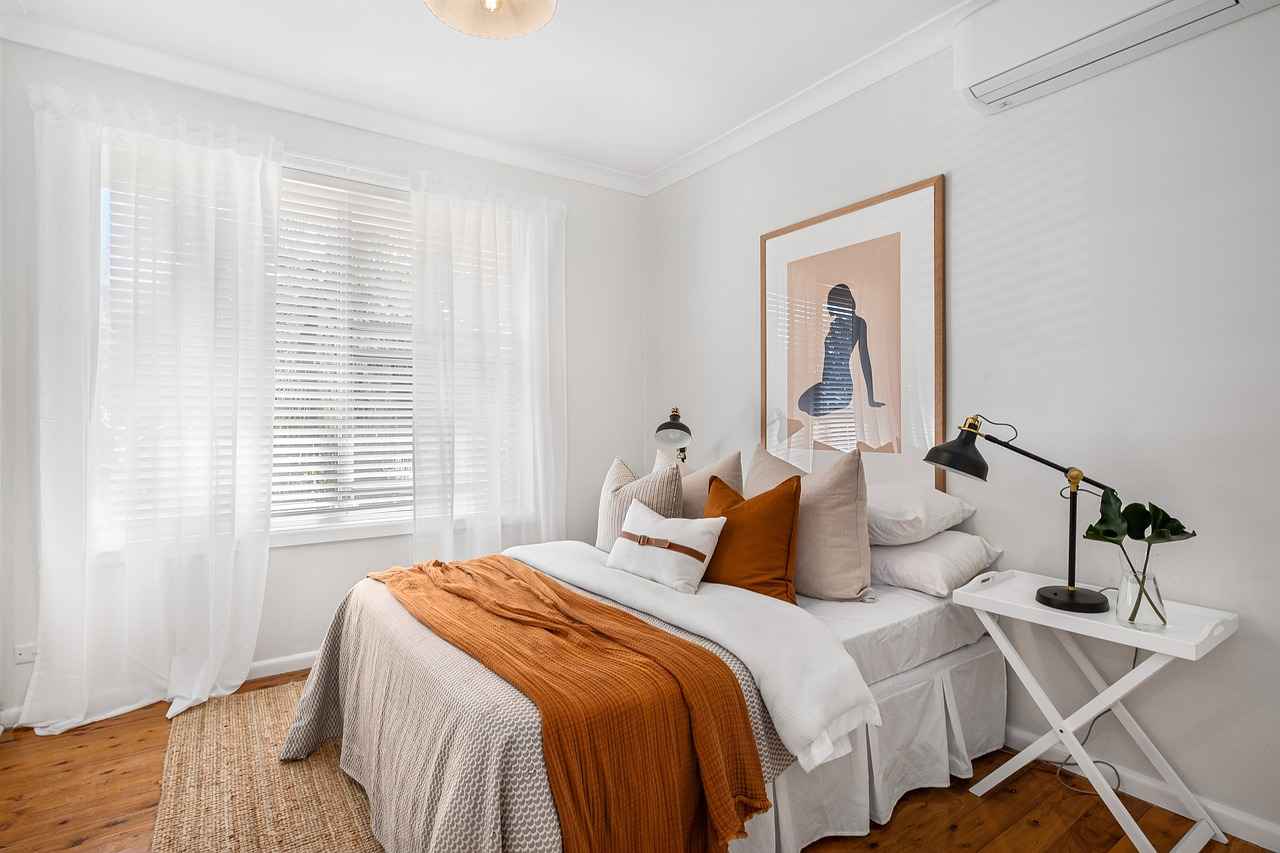
DIY Folding Screens: Versatile and Portable Solutions
When it comes to maximizing small spaces, DIY folding screens emerge as a remarkable solution. These versatile dividers not only add a stylish touch to your decor but also provide functional benefits that can transform your living environment. In this section, we will explore the myriad advantages of folding screens, their practical applications, and some creative ideas for incorporating them into your home.
Folding screens are incredibly adaptable, allowing you to easily move or store them as needed. They can be positioned to create temporary divisions in a room, providing privacy or defining distinct areas without the need for permanent alterations. This flexibility is especially beneficial in small apartments or shared spaces where maximizing functionality is essential.
- Space Efficiency: Folding screens can be collapsed and stored away when not in use, freeing up valuable floor space.
- Cost-Effective: Compared to constructing permanent walls or partitions, folding screens are often more affordable and easier to install.
- Design Versatility: Available in various materials, colors, and patterns, folding screens can complement any decor style, from modern to bohemian.
- Easy to Customize: DIY enthusiasts can personalize their folding screens with paint, fabric, or decorative elements, making them unique to their space.
Folding screens can be employed in numerous ways to enhance your living space:
- Privacy Screens: Use them in bedrooms or shared living areas to create private nooks.
- Decorative Features: Position a beautifully designed screen in your living room to serve as a focal point.
- Temporary Dividers: Ideal for open-concept spaces, they can delineate areas for work, relaxation, or dining.
- Backdrops for Events: Use folding screens as backdrops for parties or photo booths, adding an element of fun and style.
Building a DIY folding screen can be a rewarding project. Here’s a simple guide to get you started:
Materials Needed:- Three or more wooden panels (or canvas)- Hinges- Paint or fabric for decoration- Screws and a screwdriver- Sandpaper (if using wood)Instructions:1. Prepare Your Panels: Sand the edges of the wooden panels to ensure a smooth finish.2. Decorate: Paint or cover the panels with fabric to match your decor.3. Attach Hinges: Use hinges to connect the panels at one edge, allowing them to fold.4. Position Your Screen: Place the screen in your desired location, adjusting as needed.
To keep your folding screen looking its best, regular maintenance is essential. Dust the surface frequently, and if it’s made of fabric, consider washing or spot-cleaning as necessary. For wooden screens, applying a wood conditioner can help preserve the finish and prevent wear.
In summary, DIY folding screens are not only functional but also a stylish addition to any small space. Their portability, ease of customization, and ability to create temporary divisions make them an ideal choice for those looking to enhance their living areas without committing to permanent changes. With a little creativity and effort, you can craft a folding screen that perfectly suits your needs and aesthetic.
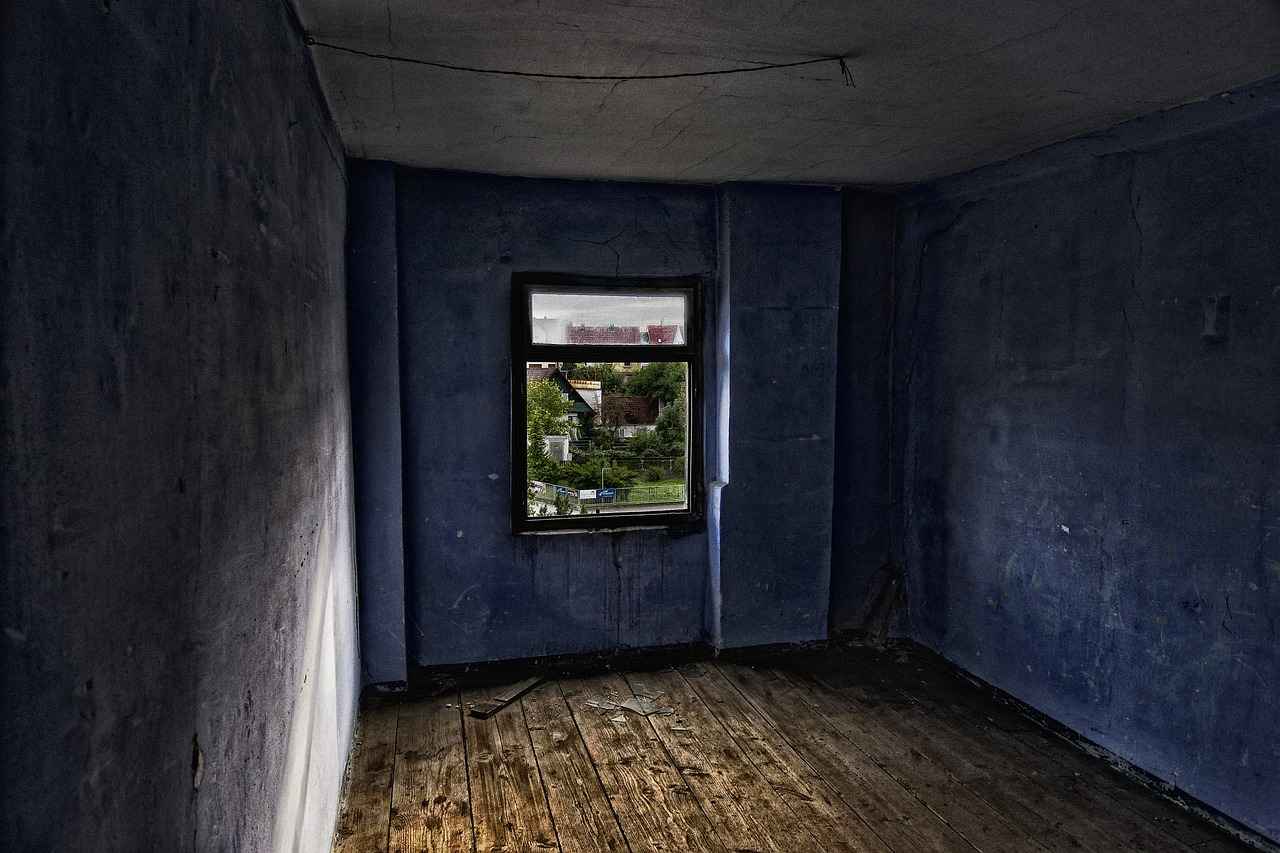
Using Curtains as Room Dividers: Simple and Cost-Effective
When it comes to maximizing small spaces, curtains emerge as a versatile and cost-effective solution for creating room dividers. They not only offer a practical way to separate areas but also introduce an element of style that can enhance your existing decor. In this section, we will explore the benefits and creative applications of using curtains as room dividers.
One of the primary reasons to consider curtains as room dividers is their affordability. Unlike permanent structures, curtains can be easily purchased and installed, making them an ideal choice for renters or those on a budget. Additionally, curtains can be customized in various fabrics, colors, and patterns, allowing you to match them with your home’s aesthetic effortlessly.
Another significant advantage of using curtains is their flexibility. They can be drawn open or closed, offering you the freedom to create an intimate space or an open layout as needed. This adaptability is especially useful in multifunctional areas such as studios or shared living spaces, where privacy and openness are both desired at different times.
- Fabric: Opt for lightweight fabrics for a breezy feel or heavier materials for more privacy.
- Color: Choose colors that either complement or contrast with your existing decor to make a statement.
- Length: Floor-to-ceiling curtains can create an illusion of height, while shorter options can make a room feel cozier.
There are several innovative methods to hang curtains for room division:
- Ceiling-mounted tracks: This allows for smooth opening and closing, making it easy to adjust the space as needed.
- Room divider rods: These can be installed in a way that allows for easy movement and versatility.
- DIY solutions: Consider repurposing old curtain rods or using tension rods for a unique touch.
Beyond functionality, curtains can significantly enhance the visual appeal of your space. Consider layering different fabrics or incorporating patterns to add depth and interest. You can also accessorize with decorative tiebacks or clips to create a more polished look.
To keep your curtains looking fresh, regular maintenance is essential. Here are some tips:
- Washing: Check the care label for washing instructions to maintain fabric quality.
- Dusting: Regularly dust your curtains to prevent allergens from accumulating.
- Ironing: If necessary, iron curtains to remove wrinkles and keep them looking crisp.
In conclusion, using curtains as room dividers offers a simple and cost-effective solution for redefining spaces in your home. Their affordability, flexibility, and styling options make them a popular choice for anyone looking to enhance their living environment. With the right curtains, you can transform any area into a functional and aesthetically pleasing space.
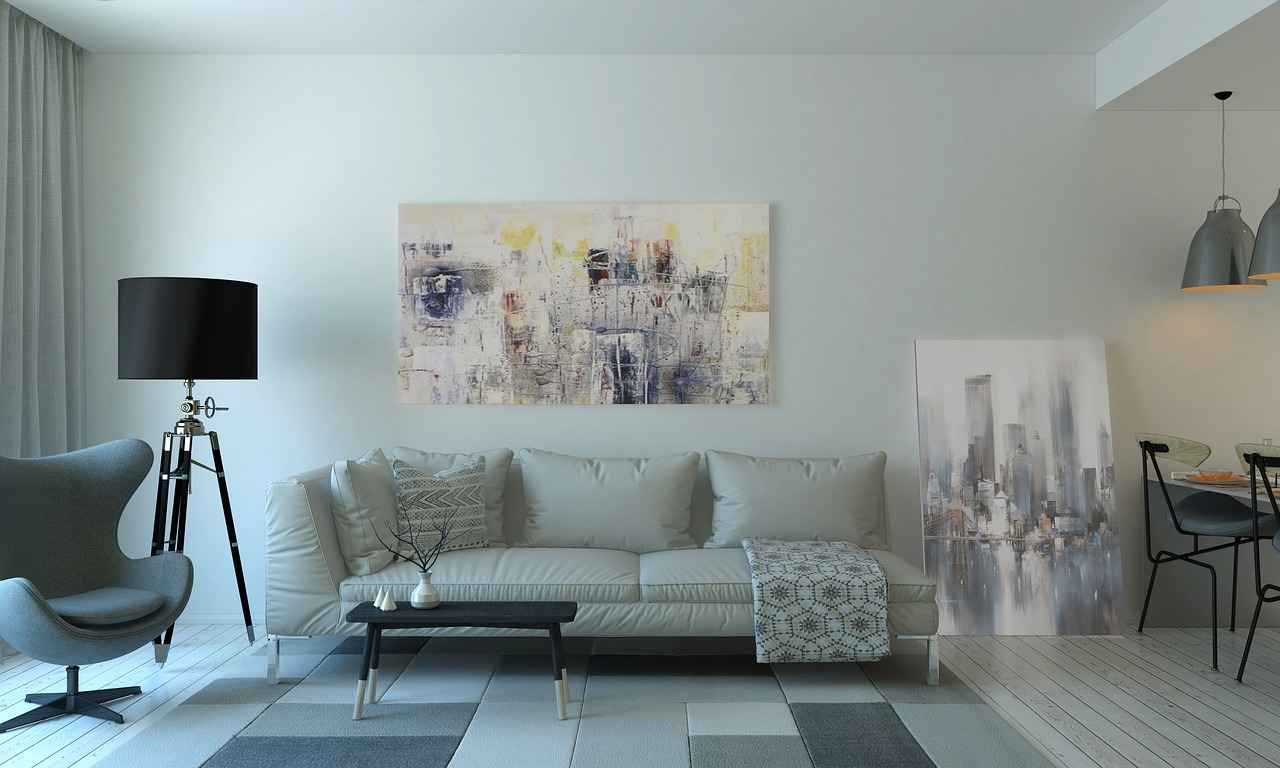
Creating a Gallery Wall as a Room Divider
Creating a gallery wall as a room divider is not just an innovative way to separate spaces; it is also a **creative expression** of your personal style. This unique approach allows you to transform a simple wall into a stunning visual feature that showcases your favorite art pieces, photographs, and memories.
When designing a gallery wall, consider the following aspects to ensure it serves both as a divider and a captivating display:
- Theme and Cohesion: Choose a theme that resonates with your personality. Whether it’s a color palette, a specific art style, or a collection of travel memories, maintaining a cohesive look will enhance the overall aesthetic.
- Frame Variety: Using different frame styles and sizes can add depth and interest. Mix and match frames to create a dynamic look, but ensure they harmonize with your room’s decor.
- Placement: Position your gallery wall strategically to define spaces without obstructing light. A well-placed gallery wall can create an inviting atmosphere while maintaining an open feel.
- Layering Techniques: Experiment with layering artwork and photos to create a 3D effect. This technique can draw the eye and add a unique dimension to your gallery wall.
Additionally, consider incorporating various media, such as canvas art, framed prints, and even textiles. This variety can enhance the visual appeal and make your gallery wall a conversation starter.
To further personalize your gallery wall, think about including:
- Personal Mementos: Items like postcards, letters, or souvenirs can add a personal touch that reflects your journey and experiences.
- Quotes and Typography: Incorporating framed quotes or typographic art can add a motivational or whimsical element that resonates with your space’s vibe.
- Lighting: Consider adding spotlights or string lights to enhance the artwork. Proper lighting can highlight your pieces and create a warm ambiance.
Moreover, a gallery wall can help in defining zones in open-plan living spaces. For instance, it can subtly separate a living area from a dining space, allowing for an open yet distinct layout. This is particularly beneficial in small apartments where maximizing space is crucial.
When it comes to installation, ensure you have the right tools and materials. Use wall anchors for heavier pieces and a level to keep everything aligned. Planning the layout on the floor before hanging can also save time and prevent unnecessary holes in the wall.
In summary, creating a gallery wall as a room divider is an excellent way to blend functionality with creativity. By thoughtfully curating your art and decor, you can not only enhance your space’s aesthetic but also make a bold statement about your style. This approach adds **character** and **personality** to your home, making it a true reflection of who you are.
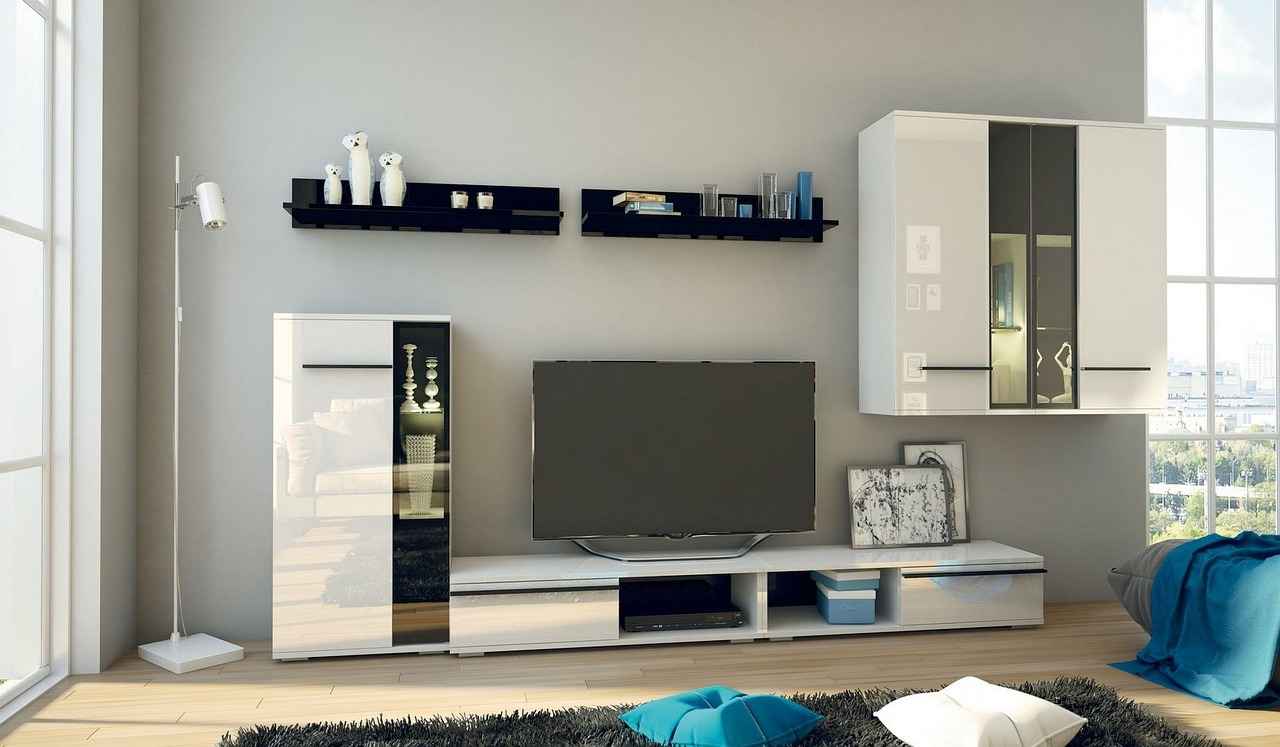
DIY Pallet Room Dividers: Rustic Charm
Using wooden pallets as room dividers is an innovative way to introduce a touch of rustic charm to your home. Not only are they budget-friendly, but they also offer a unique aesthetic that can transform any space into a cozy retreat. With a little creativity and effort, you can customize these dividers to reflect your personal style, making them a perfect addition to any room.
One of the primary advantages of using pallets is their versatility. They can be easily painted, stained, or left in their natural state, allowing you to adapt them to your existing decor. For a more personalized touch, consider adding decorative elements such as fairy lights, hanging plants, or artwork. This customization not only enhances the visual appeal but also makes the divider functional, serving as both a separation tool and a decorative feature.
When designing your pallet room divider, think about the layout of your space. Here are some creative ideas to inspire your project:
- Vertical Pallet Dividers: Stack pallets vertically to create a tall divider that offers privacy while still allowing light to filter through.
- Horizontal Pallet Screens: Arrange pallets horizontally for a more modern look. This style can be particularly effective in open-concept spaces.
- Sliding Pallet Dividers: Attach wheels to the base of your pallet divider for a portable solution. This allows you to easily move the divider as needed.
To ensure your pallet divider is both functional and safe, it’s essential to prepare the pallets properly. Start by sanding down rough edges to prevent splinters. If you choose to paint or stain, use non-toxic finishes to maintain a healthy indoor environment. Additionally, consider reinforcing the structure with brackets or screws to enhance stability, especially if the divider is tall.
Another benefit of pallet dividers is their eco-friendliness. By repurposing pallets, you contribute to sustainability efforts while creating something beautiful for your home. This approach not only reduces waste but also adds a story to your decor, making your space feel more personalized and inviting.
Incorporating wooden pallets as room dividers is not just about aesthetics; it’s also about functionality. They can effectively define spaces in your home, such as separating a living area from a workspace or creating a cozy nook for reading. This flexibility makes them a practical choice for anyone looking to maximize their living space.
In conclusion, DIY pallet room dividers are a fantastic way to add rustic charm and practicality to your home. With their affordability, versatility, and eco-friendly nature, these dividers can transform your space while reflecting your unique style. Whether you opt for a simple design or a more elaborate setup, the possibilities are endless, making wooden pallets a trendy choice for modern interiors.

Incorporating Mirrors in Room Dividers: Enhance Light and Space
In the world of interior design, mirrors are not just functional items; they are powerful tools that can transform the perception of space in your home. When used strategically as room dividers, mirrors can enhance the overall aesthetic while also serving practical purposes. This article delves into the multifaceted benefits of incorporating mirrors into your room divider designs, highlighting how they can create a sense of openness and light.
Mirrors have a unique ability to reflect light and create depth, making even the smallest areas feel more expansive. By placing mirrors strategically, you can manipulate the way light enters a room, allowing it to bounce off surfaces and illuminate dark corners. This reflective quality can significantly alter the ambiance of a space, making it feel brighter and more inviting.
Using mirrors as room dividers presents several advantages:
- Visual Appeal: Mirrors add a touch of elegance and sophistication to any room. They can serve as a focal point, drawing the eye and enhancing the overall decor.
- Functional Flexibility: Unlike traditional dividers, mirrors can be moved or repositioned easily, allowing for versatile room configurations.
- Enhanced Light: Mirrors can help distribute natural light throughout your space, reducing reliance on artificial lighting and creating a more sustainable environment.
There are numerous creative ways to use mirrors for room division:
1. **Full-Length Mirrors:** These can be mounted on walls or used as freestanding dividers. They provide a practical function while also making the space appear larger.2. **Mirrored Screens:** A folding screen made entirely of mirrors can serve as a stunning room divider that is both functional and stylish.3. **Wall-Mounted Mirrors:** Arranging a series of smaller mirrors on a wall can create a unique divider that adds character to your space.
When selecting mirrors for your room divider, consider the following:
- Frame Style: The frame of the mirror should complement your existing decor. Whether you prefer a modern, minimalist look or a more ornate style, choose frames that enhance your overall theme.
- Size and Shape: Larger mirrors can create a dramatic effect, while smaller mirrors can be arranged in patterns for a more eclectic look. Experiment with different shapes to find what works best in your space.
To keep your mirrored dividers looking their best, regular maintenance is essential:
- Cleaning: Use a gentle glass cleaner and a soft cloth to avoid scratches. Regular cleaning will ensure that your mirrors remain clear and reflective.
- Placement: Avoid placing mirrors in direct sunlight for extended periods, as this can cause fading or damage to the surrounding decor.
In conclusion, incorporating mirrors as room dividers is a brilliant way to enhance light and space within your home. Their ability to reflect light, create the illusion of depth, and add a stylish element to your decor makes them an ideal choice for anyone looking to maximize small areas. By understanding the various styles and maintenance needs, you can effectively utilize mirrors to redefine your living environment.
Frequently Asked Questions
- What materials can I use for DIY room dividers?
You can get creative with a variety of materials! Consider using fabric, wooden pallets, bookshelves, or even plants to create unique dividers that suit your style and needs.
- Are room dividers easy to install?
Absolutely! Most DIY room dividers are designed for easy installation. Whether you’re hanging curtains or assembling a bookshelf, you can usually get it done in a few hours without needing professional help.
- Can room dividers improve my home’s aesthetics?
Definitely! A well-chosen room divider can enhance your decor, create visual interest, and even serve as a focal point in your space. Think of them as the icing on the cake for your interior design!
- How do I choose the right type of room divider?
Consider your space’s purpose! If you need flexibility, go for folding screens. For storage, bookshelves work wonders. If you want a soft touch, opt for curtains or fabric dividers. Match it to your style and functional needs!
- Can plants really be used as room dividers?
Yes, indeed! Using plants not only divides spaces but also adds a refreshing, natural element to your decor. Just ensure you choose the right plants for your lighting conditions!

